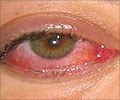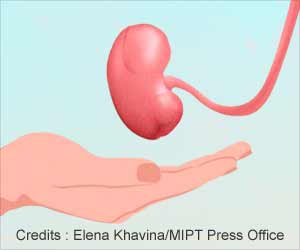Confirmation that a genetic factor called a repeating trinucleotide is a strong predictor of an individual's risk of developing the eye condition Fuchs' dystrophy.

The findings are based on an initial genome-wide association study that revealed a link between Fuchs' dystrophy and the TCF4 gene. Mayo researchers further defined the association with Fuchs' to be due to unusually long segments of repeated DNA nucleotides in the gene. In this case, three nucleotide residues (aka trinucleotide) repeat more than 40 times, some as high as several thousand repeats.
"Those long repeats of trinucleotides cause havoc, impacting the coding of the TCF4 protein," says lead researcher Keith Baratz, M.D., a Mayo Clinic ophthalmologist who will present at the conference. Characteristics of trinucleotide repeat diseases include later onset of the condition and progressive degeneration.
The study showed that a particular repeating trinucleotide, TGC in the TCF4 gene, is a strong predictor of disease. Researchers say that while Fuchs' dystrophy has other causes, TCF4 repeat expansion is a major cause of the condition in the patients in the Mayo study, accounting for about three-quarters of cases.
Source-Eurekalert











